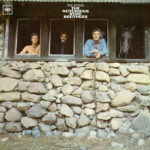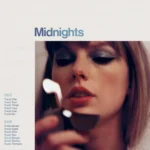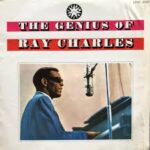 “Led Zeppelin – Led Zeppelin” is the debut studio album released by the English rock band Led Zeppelin in 1969. It introduced the world to the band’s unique blend of blues, rock, and folk influences, setting the stage for their iconic career. Let’s delve into a detailed review of this influential album:
“Led Zeppelin – Led Zeppelin” is the debut studio album released by the English rock band Led Zeppelin in 1969. It introduced the world to the band’s unique blend of blues, rock, and folk influences, setting the stage for their iconic career. Let’s delve into a detailed review of this influential album:
Track Listing:
“Good Times Bad Times” – The album kicks off with this energetic and hard-hitting track. It showcases the band’s tight musicianship, with Jimmy Page’s memorable guitar riffs and Robert Plant’s powerful vocals setting the tone for the album.
“Babe I’m Gonna Leave You” – This song highlights Led Zeppelin’s ability to create dynamic and emotionally charged compositions. It transitions between soft, delicate passages and explosive, guitar-driven sections, displaying the band’s versatility and knack for creating tension.
“You Shook Me” – A bluesy number featuring heavy guitar and harmonica, “You Shook Me” pays homage to the band’s blues roots. It showcases the raw power and intensity of Led Zeppelin’s sound.
“Dazed and Confused” – One of the album’s standout tracks, “Dazed and Confused” is an epic piece that exemplifies Led Zeppelin’s experimental and improvisational nature. Jimmy Page’s guitar work, including his iconic use of a violin bow, takes center stage, creating a mesmerizing and hypnotic atmosphere.
“Your Time Is Gonna Come” – This song combines folk-inspired acoustic passages with heavier electric sections, demonstrating Led Zeppelin’s ability to seamlessly blend different musical elements. Plant’s soulful vocals and John Paul Jones’ organ contributions add depth and richness to the track.
“Black Mountain Side” – An instrumental piece showcasing Jimmy Page’s intricate fingerpicking skills, “Black Mountain Side” exudes an atmospheric and mystical quality. It provides a brief respite from the album’s more intense moments.
“Communication Breakdown” – A high-energy and infectious track, “Communication Breakdown” is characterized by its driving rhythm and catchy guitar riffs. It exemplifies Led Zeppelin’s ability to create straightforward, rock ‘n’ roll anthems.
“I Can’t Quit You Baby” – Another blues-influenced track, “I Can’t Quit You Baby” highlights the band’s tight musicianship and their ability to infuse their own style into traditional blues arrangements. Plant’s soulful vocals shine through, accompanied by Page’s searing guitar solos.
“How Many More Times” – Closing the album on a high note, “How Many More Times” is an epic track that encompasses a wide range of musical styles and moods. From its bluesy beginnings to its explosive guitar-driven sections and dramatic finale, it showcases Led Zeppelin’s ability to captivate and engage the listener.
Review:
“Led Zeppelin – Led Zeppelin” is an exceptional debut album that introduced the world to Led Zeppelin’s innovative and genre-defying sound. The album displays the band’s remarkable musicianship, songwriting skills, and their ability to push the boundaries of rock music.
From the powerful opening track “Good Times Bad Times” to the sprawling epic “How Many More Times,” the album is a showcase of Led Zeppelin’s versatility. It seamlessly blends heavy blues rock, folk influences, and elements of psychedelia, creating a unique sonic landscape that set them apart from their contemporaries.
The chemistry between the band members is palpable, with Robert Plant’s dynamic and emotive vocals, Jimmy Page’s masterful guitar work, John Paul Jones’ versatile bass lines, and John Bonham’s thunderous drumming all contributing to the album’s raw and powerful sound.
Led Zeppelin’s debut album laid the foundation for their subsequent success and cemented their status as one of the greatest rock bands of all time. It remains a timeless classic, with its mix of hard-hitting rockers, introspective ballads, and experimental compositions. Led Zeppelin’s self-titled album is a must-listen for any fan of rock music, as it represents the birth of a band that would go on to reshape the landscape of popular music.
This post has already been read 344 times!

























